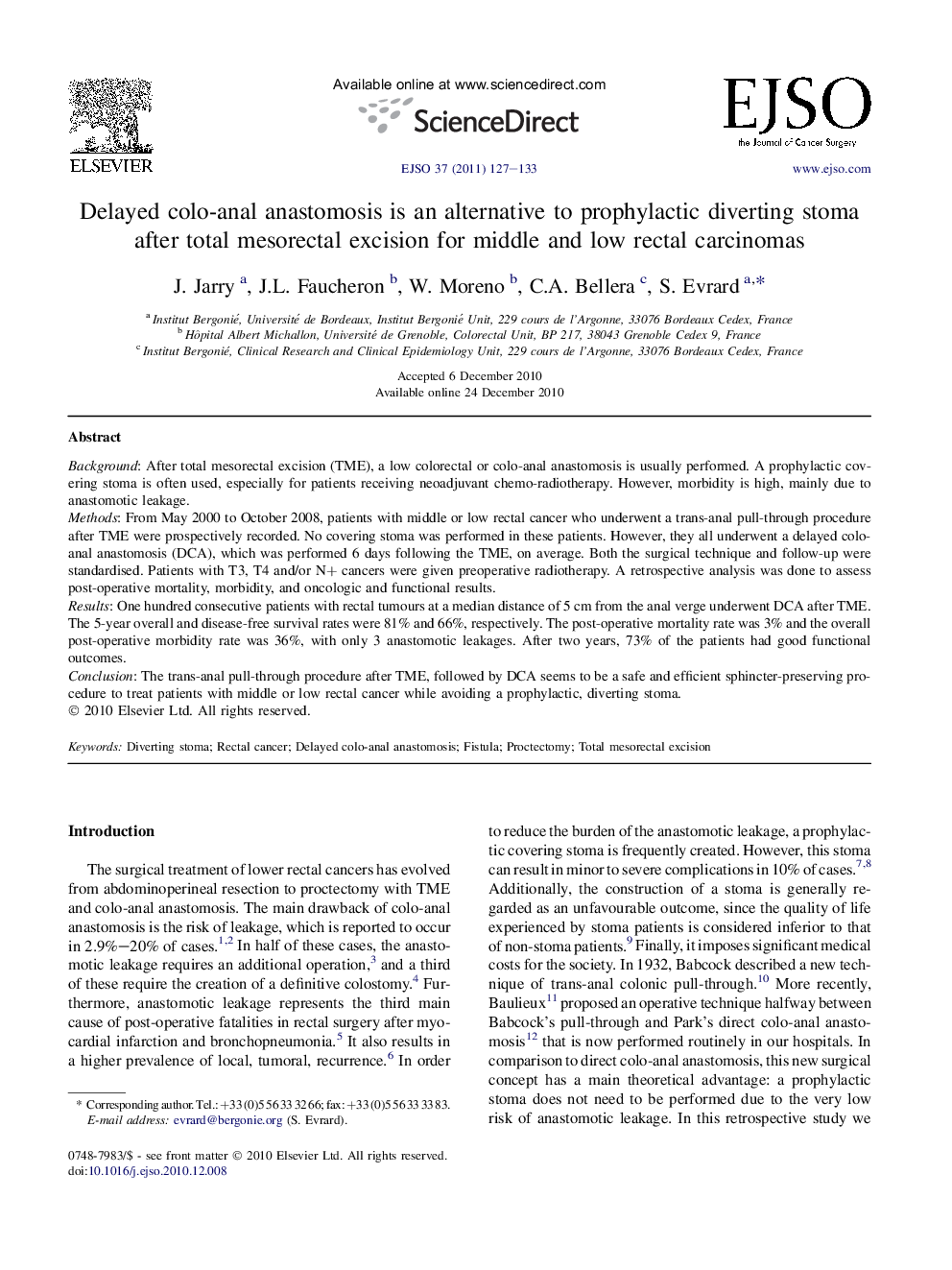| Article ID | Journal | Published Year | Pages | File Type |
|---|---|---|---|---|
| 3987086 | European Journal of Surgical Oncology (EJSO) | 2011 | 7 Pages |
BackgroundAfter total mesorectal excision (TME), a low colorectal or colo-anal anastomosis is usually performed. A prophylactic covering stoma is often used, especially for patients receiving neoadjuvant chemo-radiotherapy. However, morbidity is high, mainly due to anastomotic leakage.MethodsFrom May 2000 to October 2008, patients with middle or low rectal cancer who underwent a trans-anal pull-through procedure after TME were prospectively recorded. No covering stoma was performed in these patients. However, they all underwent a delayed colo-anal anastomosis (DCA), which was performed 6 days following the TME, on average. Both the surgical technique and follow-up were standardised. Patients with T3, T4 and/or N+ cancers were given preoperative radiotherapy. A retrospective analysis was done to assess post-operative mortality, morbidity, and oncologic and functional results.ResultsOne hundred consecutive patients with rectal tumours at a median distance of 5 cm from the anal verge underwent DCA after TME. The 5-year overall and disease-free survival rates were 81% and 66%, respectively. The post-operative mortality rate was 3% and the overall post-operative morbidity rate was 36%, with only 3 anastomotic leakages. After two years, 73% of the patients had good functional outcomes.ConclusionThe trans-anal pull-through procedure after TME, followed by DCA seems to be a safe and efficient sphincter-preserving procedure to treat patients with middle or low rectal cancer while avoiding a prophylactic, diverting stoma.
